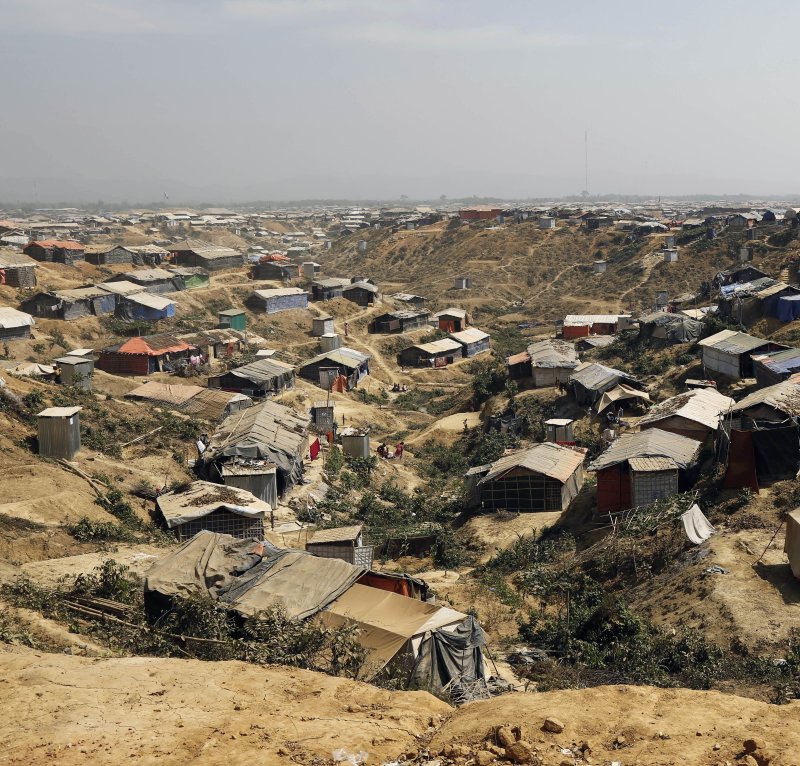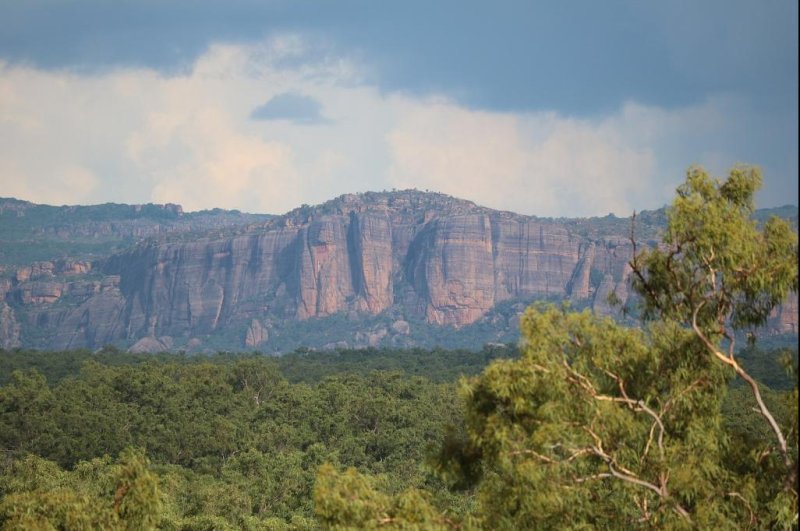THE MAGIC MOUNTAIN
The idea of Lemurians has a complex pedigree—rooted in science, pseudoscience, science fiction and various esoteric beliefs.
In the 18th century, a palaeontologist named J. Sclater came up with Lemuria—a theoretical land bridge—to explain how Lemurs got from Asia to Madagascar. Plate tectonics pretty much ended the vogue for lost continents in science, but Lemuria was co-opted into a popular theory of a lost, pre-Atlantean continent called Mu that explains common mythology and symbology between disparate cultures. The concept evolved in different directions, but in certain circles of thought Lemuria-Mu morphed to incorporate much of the Pacific, and eventually, California and the entire West Coast of the U.S. A great flood, or thermonuclear war, depending on who is doing the telling, caused the Lemurians to take refuge in Mount Shasta.
Their descendants still live there, although according to Lemuria believers, they are not inside the mountain on earth’s physical space: they exist in a fifth dimension, but they can travel freely back and forth between that dimension and ours.
The Theosophists took up Lemuria in the 1880s. In her writings, Theosophical Society founder Madame Blavatsky furnished the Lemurians with the metaphysical properties they still have today. To her, they were not just ancient refugees; they were a spiritually advanced civilization. Blavatsky’s writings were influential, an appealing mix of ancient religious ideas and new concepts borrowed from Darwin and modern science, but Lemuria was not linked to Mount Shasta until the publication of Frederick Spencer Oliver’s A Dweller on Two Planets in 1904. Oliver—who grew up in the gold rush town of Yreka not far from Mount Shasta—claimed his writing was channelled through visions and “mental dictation” from Phylos the Tibetan, of the Great White Brotherhood, who once lived on the ancient continent of Lemuria but now lived in the depths of Mount Shasta. The book incorporates many Theosophical ideas.
But the most decisive chapter for Lemurians came in 1931 when Harvey Spencer Lewis, a founder of the San-Jose-based Order of the Rosicrucians, published under the pseudonym Wishar Cerve, Lemuria: The Lost Continent of the Pacific. It tied various strands of Lemurian lore together by rehashing other books and articles, cementing the link between Lemuria’s ancient civilization and archaeological ruins in the western United States, and trying to support his claim that Lemurians were a common ancestor to all mankind. The book draws heavily on Dweller on Two Planets and Blavatsky’s writings, with some added shopkeeper testimony about tall, slender men in robes who paid in gold nuggets. But it goes a step further in asserting that Lemuria and Mu are the same thing.
What truly ensured its impact was the claim that the descendants of the Lemurian Garden of Eden were to be found in California, not Asia or Africa; and, just as curiously, that California was the oldest territory on earth. The notion that California was the true cradle of mankind was impossible for Golden Staters (narcissists even then!) to resist. California was already a haven for new religions and thought; this new belief in Californian Lemurians just added to the mosaic.
In the 1930s, the spiritual influx began in earnest—thanks both to Cerve’s book and the I AM movement, which was founded in the wake of a 1934 book, Unveiled Mysteries, which was written by a Midwestern mining engineer named Guy Ballard.
Ballard was a fan of Theosophist ideas, and he claimed in his book that while on a hike on Shasta in 1930, he met Saint Germain, a common figure in New Age beliefs who is alleged to be an 18th century alchemist, referred to by followers as “the Wonderman of Europe” and “the man who knows everything and never dies”. St. Germain called himself an Ascended Master and began training Ballard to be a “messenger”. Based on these teachings, Ballard and his wife founded the St. Germain Foundation— a group (classified as a cult by J. Gordon Melton in his Encyclopaedic Handbook of Cults in America) that is still active today. It remains guided by “I AM” activity—the acronym comes from Ascended Masters and the religion includes a series of affirmations such as “I AM the spirit”. (The I AM concept had already appeared in A Dweller on Two Planets). The idea of Ascended Masters (St. Germain is one, Jesus is another) like the Theosophy that influences it, blends Christianity, Buddhism, and other spiritual threads. It is essentially a guide to life based on Ascension–achieving an individual higher spiritual consciousness.

Ballard also described the visions of his and St. Germain’s past lives in Atlantis and Lemuria when he was at Mount Shasta—and soon, the mountain was besieged by Lemuria seekers—many of whom were I AM followers.
The St. Germain Foundation bought a lot of land around Mount Shasta. Not everyone was thrilled with the area’s spiritual makeover. When the foundation bought the historic Shasta Springs Resort in the 1950s, in Dunsmuir, it made what had been beloved public land, including two waterfalls, off-limits to the locals.
Frank Barr was seven years old when he came to Dunsmuir in 1949, when his father got work at a lumber mill. Sipping on barley wine at Dunsmuir Brew House in a pair of denim Dickies overalls, he had plenty of complaints: “They took away our free country! Bought up the retreat, painted it white, and put up No Trespassing signs. They don’t contribute anything to the community.”
PEOPLE SAID YOU DON’T HAVE TO GO TO INDIA, JUST GO TO MOUNT SHASTA
Today, many I AM adherents live at the Dunsmuir complex. There is an I AM Reading Room and a temple in Mount Shasta—and a yearly ‘I AM COME’ pageant. I AM adherents revere the color purple; the Violet Ray is divine love. (Before I visited the Reading Room, Barr told me not to wear red or black.).
Another influx—not just of I AM followers—began in the 1960s, with the cultural appetite for spiritual alternatives and expanding consciousness: “A lot of people were travelling to India,” says a spiritual guide and coach named Andrew Oser. “But people said you don’t have to go to India, just go to Mount Shasta.”

Aurelia-Louie Jones was a public face for Lemuria-Telos, and gave it a global footprint; her books were translated into 17 languages and there is a worldwide Telos network that is still active. Jones died of cancer in 2009.
But Jones was not the first to channel from Telos: that was Diane Robbins, a schoolteacher from Rochester, NY.
Robbins lives in a dark-wood house at the base of Mount Shasta; one more left turn, and you are on the road that takes you up and into the mountain’s dense forest.
In 1990, Adama, the High Priest of Telos, contacted Robbins telepathically and began to dictate. “I didn’t even question why—I just did it. I took messages for 2 or 3 years, word for word.”
When finally, sitting in her kitchen in Rochester, she asked Adama what to do next, he told her to bind and market the book, which she did. Telos: Original Transmissions from the Subterranean City beneath Mount Shasta was published in 1992. The current edition features a blurb by Shirley MacLaine: “I read this book and found it to be fascinating.”
Telos, she explains to me, means “communicating with the spirit”.The book’s purpose was for others to make their own connections with Adama and to attain higher consciousness. In this iteration, Adama is an Ascended Master in the tradition of the I AM movement. The book reveals details of Telos’ advanced society, such as the Telosian Justice System; it also says Lemuria ended not in a flood, but thermonuclear war.
In Robbins’ reading, Telos is one of 100 subterranean cities inside the earth called the Agarthan Network – the book also contains a diagram of the Hollow Earth. The Hollow Earth theory has waxed and waned for centuries, but is present in many ‘alternative history’ beliefs and conspiracy theories, including the Illuminati. It appeared in in two of Blavatsky’s books, and she may have cribbed it from the holy city underground found in some Buddhist ideas.
Robbins insists that she does not read about other people’s experiences with Lemuria or Telos. “I could never read them; I don’t want to hear about them, otherwise I don’t know what’s coming from me, or from the Ascended Masters. I never even watch movies, because I have to be clear. I can’t do what I do if I fill my mind with other people’s information.”
Robbins says she had however, listened to the revelations of Sharula Dux – a supposed Princess of Telos inside Mount Shasta, born in 1725, who said she came to the surface through Mount Shasta’s tunnel systems in 1988. Sharula Dux spoke at conferences and gave a few interviews, revealing that Atlantis and Lemuria were two great continents that fought a war; that Telos is an underground city in the Agarthan Network governed by 12 Ascended Masters, with Adama its high priest. These revelations are the root of the modern channelers, it seems.
It appears that Dux, also known as Bonnie Condey, ended up in Santa Fe with her husband. (Santa Fe is also a St. Germain hub—and was also, in some books, the location of Telos.) According to an investigative journalist in Austin, TX, Sharula/Bonnie was born in Utah in 1952 and worked as a stripper in Hollywood under the name Atlantis. The name Sharula had also appeared in a 1978 Romance novel.

A few months after Robbins’ book came out, Aurelia Louise Jones contacted Robbins and offered to help publish and promote a second edition. Jones then moved to Mount Shasta in 1997, and started channelling for her own messages from Adama and Telos.
Robbins and Jones worked together for a time: Jones was in the dedications in Robbins’ second and third editions. But they differed in their approaches, particularly on the correct way to channel Adama: “I wrote down word-for-word what Adama said to me, and Aurelia wanted me to edit my sentences, so we would argue.”
Robbins explains that Jones performed what she called a “co-creative process” in her books by editing Adama’s channelings, which Robbins believes diluted and disrupted Adama’s true “vibration”.
Even a spiritual mecca is not immune to small-town politics.
At Adama’s insistence, Robbins moved to Mount Shasta in 2007, expecting to join a welcoming community, but found that fellow Lemuria/Telos believers in Jones’ circle would have nothing to do with her.
“Aurelia [Jones] really did not want me to move here. She sent me emails telling me not to move here. She didn’t want anyone to know,” says Robbins. “And when I came here, nobody talked to me. I can only imagine what she told people about me. Her ego got in the way. And those people are not following the teachings of Telos. It’s really sad.”
Robbins is not sure what to make of the alleged encounters around the mountain; “People tell me all the time they’ve seen Lemurians… but Adama made it clear that they weren’t showing themselves right now.”
For her part, Jones claimed to have encountered Telosians only once; two tall gentlemen showed up at her door and bought $400 worth of her health products. She had complained to Adama about cash flow problems. She suspected the men were from Telos, not Tahoe as they said, but one of the rules is that Telosians, while they surface from time to time, cannot reveal they are from there. Although Adama did confirm to her afterwards that he had sent them.

Ashalyn, who runs Shasta Vortex Adventures, says she is not an adherent of any of the movements in Mount Shasta. When I ask he if she has had a Lemurian encounter, she responds, “I don’t see Lemurians, I channel them.” She is currently working on her own book with Adama. Her previous book was written with Thoth the Atlantean, another Mount Shasta inhabitant.
There are other spiritual vortex locations, such as Arizona’s Sedona Valley, and other New Age centers like Santa Fe. But the mountain makes it easier for people to tune in to whatever they’re trying to hear.
So what are people seeing when they have encounters with odd people? Some tell me it’s more about the feeling, not seeing; many of the strangest stories contained in books from the last century seem to have been taken as second-hand gospel by others.
Saranam (birth name: Mark Greenberg), who works at Mount Shasta’s Crystal Room, has another theory: people who have meditated a lot and have themselves tapped in to a higher consciousness might seem otherworldly to others who hike on the mountain. “People might just go there and meet people there that have a presence – and think they’ve had an encounter with a mystical being.”

READ ON The Magic Mountain (roadsandkingdoms.com)



















